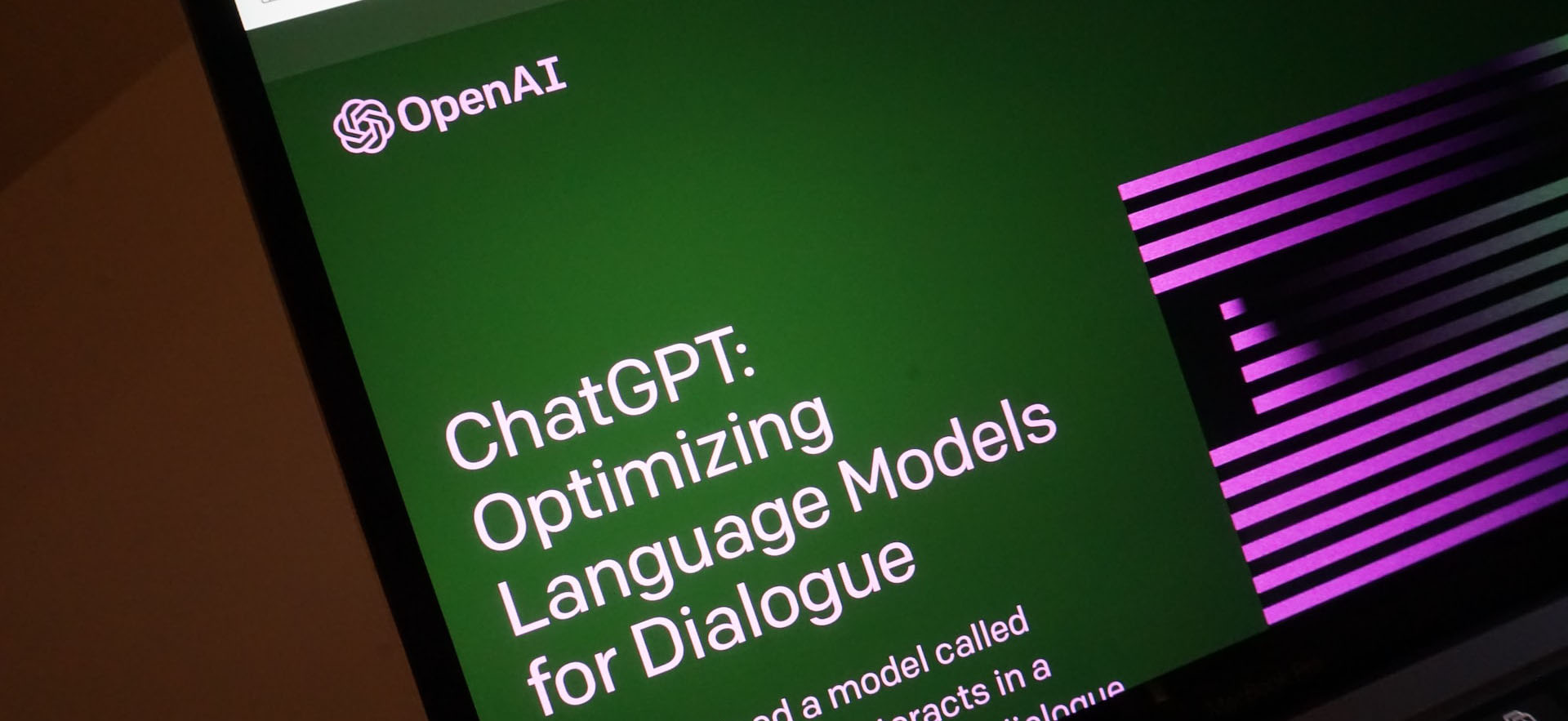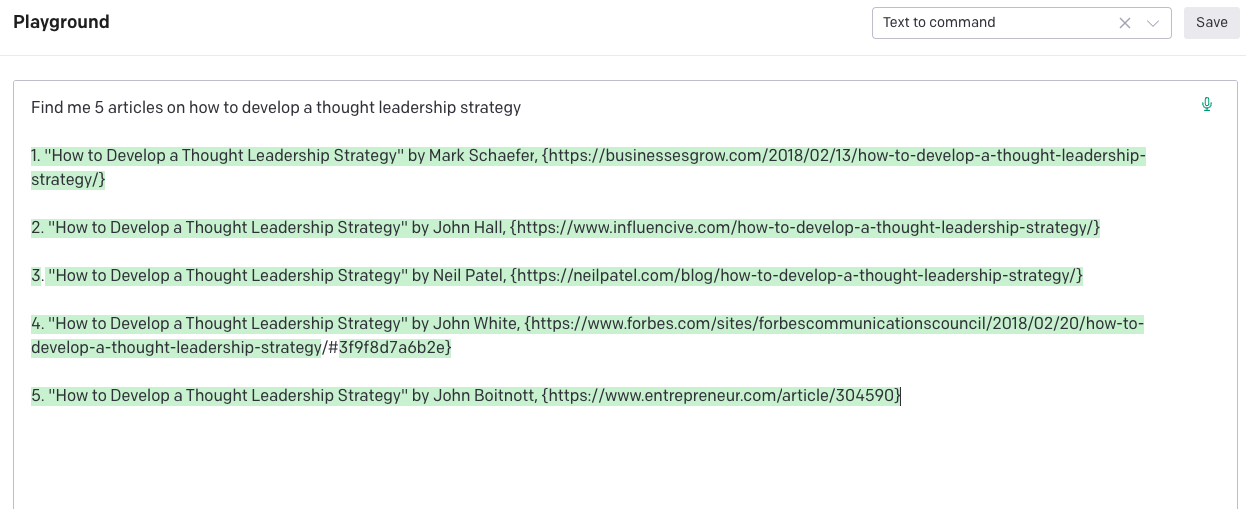How ChatGPT-4 should (and shouldn't) be used for thought leadership

ChatGPT is undoubtedly the most talked-about technology of 2023. In just two months it’s picked up a record-breaking 100 million users as people around the world explore its potential.
The generative AI tool has just released its new incarnation 'ChatGPT-4', which has a plethora of uses, enabling humans to have more interactive conversations with AI-powered chatbots to generate text, imagery, design, code and much more.
The biggest use case for ChatGPT-4 right now is undoubtedly content creation. In its own words, ‘ChatGPT-4 can generate text based on user input, allowing users to create stories, articles, and other types of content quickly and easily.’
When it comes to content, ChatGPT-4 looks transformative at first glance. After all, it’s a tool that can create content much faster, in much bigger quantities, and much more cheaply than can be done through human endeavour.
But as you start using the tool you can quickly see its limitations. How much you therefore rely on ChatGPT-4 for content, will really depend on your motivation and outlook.
If you’re happy to create bland, regurgitated content gathered from somewhere else and you don’t care how it reflects on your credibility, then you’ve hit the jackpot with ChatGPT-4. However, if your goal is to create original, insightful thought leadership, which does justice to your expertise, you’re still going to need to lean on human beings for that.
That isn’t dismissing ChatGPT-4 at all. It obviously wasn’t built to replace unique, human opinion. The tool does in fact offer a number of benefits that can eliminate some of the legwork in content production.
We’ve gone through a period of fairly extensive experimentation with ChatGPT & ChatGPT-4 over the last couple of months, to see how it can support the thought leadership process. This blog provides a summary of when we think it should be used - and when it shouldn’t.
Our general findings
ChatGPT-4 is very good for getting started with an idea quickly, and linking ideas to content themes, keywords, and popular search terms. It’s also good for playing around with existing content to generate better ways of explaining things.
While the text it produces is well-structured and readable, ChatGPT-4 is pulling together existing content into a form that fits whatever prompts you give it - in short, it’s rehashing and reshaping other people’s work, albeit very quickly.
AI-generated text is also very formulaic. Dare we say a little robotic. You can see ChatGPT-4 is trying to overcome this by adopting a more conversational tone so that it sounds more human. But when it comes to original thought leadership, it could never replace the knowledge and experiences of a real expert who’s worked in the field. We've not seen anything close to a lightbulb moment at any point during an AI-driven opinion piece. As a result, the content is just a bit, meh.
As an experiment, we tried to get ChatGPT-4 to produce five different articles for one of our own blogs on the same topic. While they were each a bit different, all of them were dull and uninspiring. They did nothing at all to hold a reader’s attention. Of course, you can edit what’s there, but this generally results in a full rewrite, negating any time saved at this key stage of the process.
Accuracy is also an issue. We found that ChatGPT-4T can’t always be relied upon to verify the sources it provides. Ask ChatGPT-4 to provide you with useful third-party sources, surveys, statistics etc. to support your own perspectives and it will generally come up with a decent list. However, we’ve found that some of these sources either don’t exist or are just impossible to find. This is quite a common observation with the tool with many experts cautioning its creation of 'fake facts'.
On several occasions, we’ve asked ChatGPT-4 to give the source of its output, when we've discovered something it served up doesn’t exist. When bringing this to ChatGPT’s attention, it often responds with “oops, I made a mistake”.
The learning is to 100% verify all AI-driven information (which is actually adding, rather than saving time).

Key considerations when using AI-generated content
Because of these general shortcomings, there are two issues to be particularly careful about when using ChatGPT-4 (or indeed any AI platform).
The first is that Google will punish low-quality content. Google’s helpful content system promotes content that adds value, which it increasingly views as information based on original experiences. As ChatGPT-4can only work with existing content, it’s basically impossible for it to ‘add value’.
First-hand experience is more important than ever if you want to influence Google search rankings. Google’s new E-E-A-T concept (updated in December 2022) looks for Experience, Expertise, Authoritativeness, and Trustworthiness.
This means AI-driven content created as a shortcut for SEO won’t meet these new criteria and is likely to do more harm than good. E-E-A-T is a clear indication of Google’s future direction and the search provider is only going to get better at spotting (and penalising) AI-generated content.
The other potential problem is plagiarism. This issue has already surfaced in schools where teachers have begun to clamp down on students using ChatGPT. While teachers, much like marketers, can see huge benefits in using ChatGPT-4, they are rightly concerned about cheating i.e. when a student tries to pass off AI-generated submissions as their 'own work'.
This is an important juxtaposition. If you’re trying to establish yourself or your business as a thought leader, what happens when it emerges that your ‘opinions’ are just a carbon copy of somebody else’s, which AI has found for you? It's plain cheating and if you get rumbled, you're in big trouble.
Both of the above issues lead us to wonder why people who want to use pure AI-generated content even bother putting out content at all. Also, if it’s so easy to create content using a robot, then it’s just as easy for the intended audience to find the same information themselves. It defeats the whole point of thought leadership and indeed, content marketing.
Just put it into practice. Rather than prompt ChatGPT-4 to write an article for you on XYZ, instead ask it to find you 5 existing articles on the same subject. Enough said.

How to use ChatGPT-4 right now
At this point, you might think we’ve got a massive downer on ChatGPT-4, but that really isn’t the case. No, we have a downer on those people who don't have an opinion worth sharing and instead plan to misuse AI to add to the mountain of crappy, spewed-up content that already exists.
Compared to other AI content tools, ChatGPT-4 just does it better. We’ve been able to put it to good use in a number of areas, listed below:
- Proofreading: ChatGPT-4 is really good at using natural language processing and machine learning to proofread text and spot errors in grammar, spelling, and punctuation. It can even suggest more subtle areas for potential corrections and improvements. Noice.
- Idea capture: ChatGPT-4 has a voice typing tool that can identify words and phrases in speech, and algorithms that can interpret meaning and generate text from it. While this can’t produce the finished article for you, it can at least help you capture those off-the-cuff nuggets of inspiration that pop into your head, and get them on the page more quickly.
- Finding your central argument: The key to thought leadership is having a unique opinion, and one which is often contrary to the generally-accepted solution to a particular problem. ChatGPT-4 can help you identify the common and standard approach to solving a problem. So from here you can start constructing your argument against it, and focus on where 'conventional wisdom' falls short.
- Catchy titles for articles, guides, and other forms of content: Once you are there with your original content, ChatGPT-4 is good at generating ideas for catchy titles. You can ask it to provide any number of alternatives - some are terrible, but some are okay and may give you ideas to get to the final, attention-grabbing title a little quicker than doing it all on your own.
- Repurposing content: You can ask ChatGPT-4 to create email and landing page copy from an original article, eBook or survey report that’s already well written. The output is generally passable and only needs a few prompts and edits to be finished off to a good level.
- Short-form copy: We’ve found that ChatGPT-4 is great for writing short-form copy like headlines or meta descriptions. The same applies to ad headlines that can generate decent conversion rates, and even social media hashtags - although it's worth checking these out first.
In summary
ChatGPT-4 will become an indispensable tool for marketers in the months and years ahead. Right now, it’s going to save you more time around the edges - especially in those mundane elements of content production, such as writing a landing page. But it’s only going to save you a fraction in the lengthier process of formulating an original idea, and communicating it in a way that is human, credible and based on actual experience.
There is also the danger that ChatGPT-4 could make you a little lazy, which may then impact quality and ultimately make you redundant.
In pretty much every way, pure AI-generated content is the antithesis of original, opinion-based thought leadership. It’s quantity over quality and volume over validity. And no, it won't fly with Google either, so don't make it part of your SEO strategy.
The main purpose of thought leadership is to demonstrate superior expertise - only this will convince your buyers that you can truly help them. You wouldn’t use AI to completely replace the people who implement your solutions, create your products or deliver your services. Their expertise is what your clients are buying and this can’t be displaced by AI. Neither should your approach to content.
All that said, ChatGPT-4 is getting us really excited about AI and how it’s going to take ambitious marketers into completely new territory - doing things we’ve never done before. But it’s not because of its ability to create content. For us, it’s more about how we can leverage AI to accelerate the process of turning raw data into insights, to improve sales and marketing effectiveness.
Our next experiment will focus on ChatSpot.ai - Hubspot's new AI-platform that combines ChatGPT-4 with Hubspot CRM. Rather than the traditional point & click approach to find data insights, you can uses prompts to ask the tool to find you the data you need. We'll provide a review in the coming weeks.


-1.jpg)
.jpg)